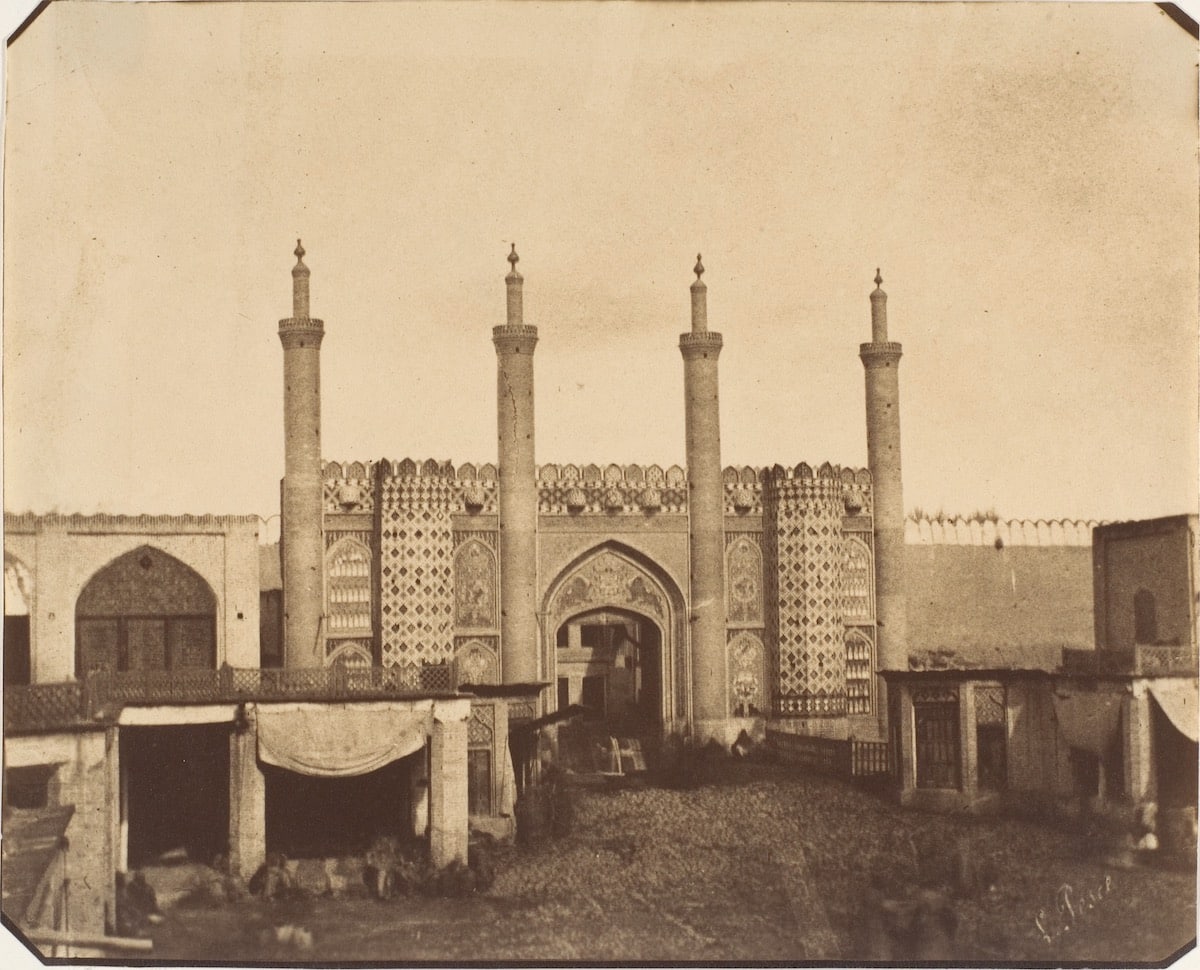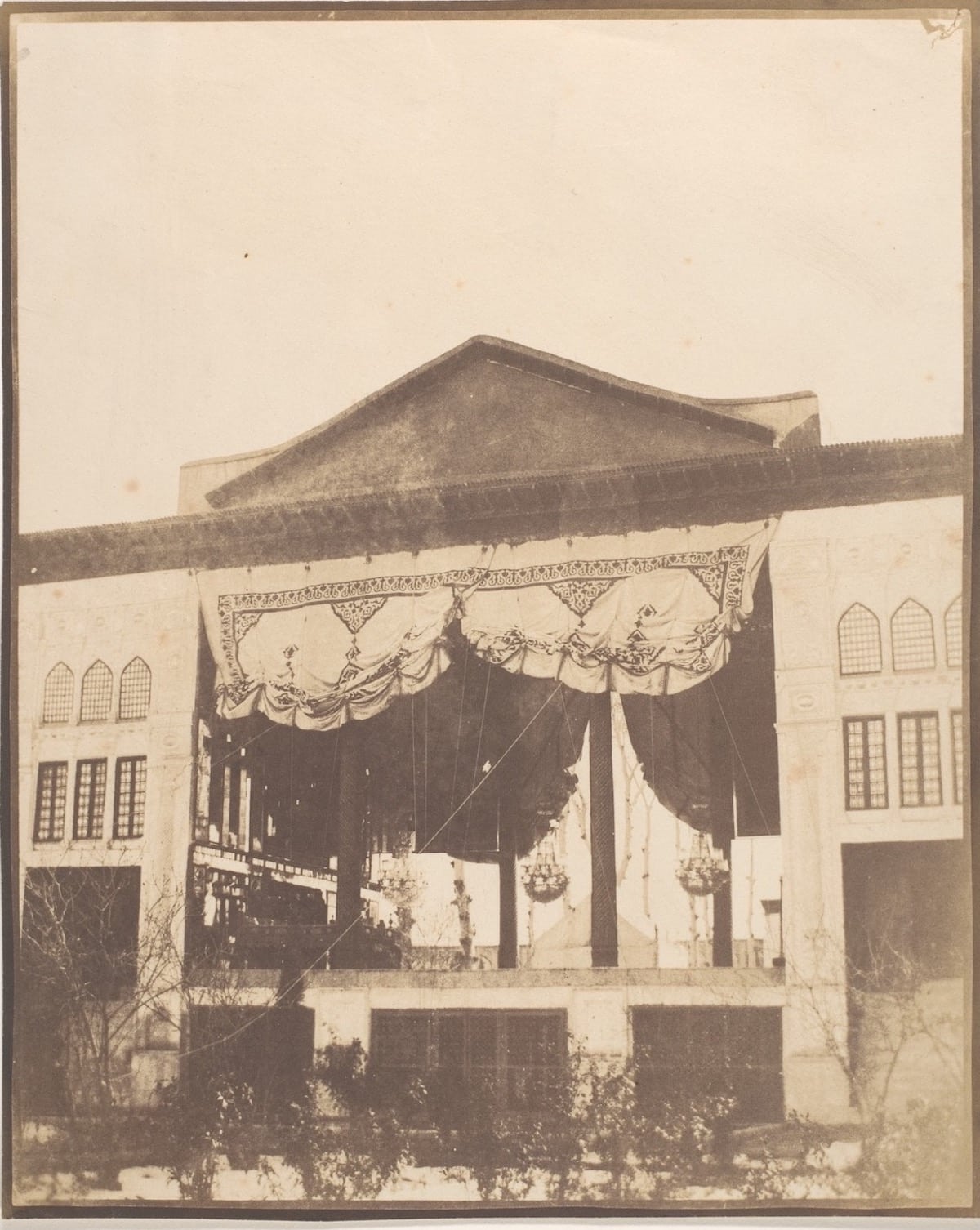These Rare Daguerrotypes Are the Earliest Surviving Photos of Iran in the 1850s

Luigi Pesce, Photo of Iran, 1850s-1860s (Photo: Metropolitan Museum of Art via Google Arts & Culture, Public domain)
When photography was still in its infancy, an Italian recorded what some of Iran's most spectacular sights in rare daguerreotypes. Luigi Pesce, a colonel from Italy, traveled to Iran to train infantry units in 1948. While there, his enthusiasm for photography led him to travel across the country and capture what he saw.
There are a total of 75 photographs in this rare collection, most of which were taken in the 1850s. These images depict everything from architecture and monuments in Iran, including Persepolis, Pasargadae, and Naqshe-e Rustam, as well as everyday life and people during this period. Although there was another photographer who traveled to Iran beforehand to do the same thing, those images didn't survive, so Pesce's collection remains the earliest photographic example of Iran.
Pesce compiled all of his photos into a book and gave one copy to the Shah Qajar Naser al-Din—who was himself, a fan of the new medium—on April 29, 1858. Later, a second copy of the collection was presented to Prince William I, King of Prussia, which would later be donated to the Metropolitan Museum of Art in New York. In addition to providing unique glimpses of 19th-century life in Iran, there are also portraits of the Shah himself during the early years of his reign.
Scroll down to browse more of these fantastic snapshots of history.
In 1848, Italian colonel Luigi Pesce traveled to Iran to train infantry units.

Luigi Pesce, Photo of Iran, 1850s-1860s (Photo: Metropolitan Museum of Art via Google Arts & Culture, Public domain)
While he was there, he took photos of local Iranian monuments.

Luigi Pesce, Photo of Iran, 1850s-1860s (Photo: Metropolitan Museum of Art via Google Arts & Culture, Public domain)
Pesce is believed to be the first photographer to successfully capture Persepolis, Pasargadae, and Naqsh-e Rustam.

Luigi Pesce, Photo of Iran, 1850s-1860s (Photo: Metropolitan Museum of Art via Google Arts & Culture, Public domain)
Pesce took 75 photos altogether and gave them to the Shah Qajar Naser al-Din Shah on April 29, 1858.

Luigi Pesce, Photo of Iran, 1850s-1860s (Photo: Metropolitan Museum of Art via Google Arts & Culture, Public domain)
Pesce gave another copy to Prince William I, King of Prussia.

Luigi Pesce, Photo of Iran, 1850s-1860s (Photo: Metropolitan Museum of Art via Google Arts & Culture, Public domain)
These photos now have a historical value of what Iran looked like during the 19th century.

Luigi Pesce, Photo of Iran, 1850s-1860s (Photo: Metropolitan Museum of Art via Google Arts & Culture, Public domain)

Luigi Pesce, Photo of Iran, 1850s-1860s (Photo: Metropolitan Museum of Art via Google Arts & Culture, Public domain)

Luigi Pesce, Photo of Iran, 1850s-1860s (Photo: Metropolitan Museum of Art via Google Arts & Culture, Public domain)

Luigi Pesce, Photo of Iran, 1850s-1860s (Photo: Metropolitan Museum of Art via Google Arts & Culture, Public domain)

Luigi Pesce, Photo of Iran, 1850s-1860s (Photo: Metropolitan Museum of Art via Google Arts & Culture, Public domain)

Luigi Pesce, Photo of Iran, 1850s-1860s (Photo: Metropolitan Museum of Art via Google Arts & Culture, Public domain)

Luigi Pesce, Photo of Iran, 1850s-1860s (Photo: Metropolitan Museum of Art via Google Arts & Culture, Public domain)

Luigi Pesce, Photo of Iran, 1850s-1860s (Photo: Metropolitan Museum of Art via Google Arts & Culture, Public domain)

Luigi Pesce, Photo of Iran, 1850s-1860s (Photo: Metropolitan Museum of Art via Google Arts & Culture, Public domain)

Luigi Pesce, Photo of Iran, 1850s-1860s (Photo: Metropolitan Museum of Art via Google Arts & Culture, Public domain)

Luigi Pesce, Photo of Iran, 1850s-1860s (Photo: Metropolitan Museum of Art via Google Arts & Culture, Public domain)
The full collection of photographs is compiled in this video:
h/t: [Open Culture]
All images via Google Arts & Culture.
Related Articles:
5,000-Year-Old Iranian Vase Features the First Known Animation
Dazzling Architectural Portraits Capture Intricate Interiors of Historic Iranian Mosques
100 Years of Changing Iranian Beauty, Hair, and Makeup in 1 Minute
READ: These Rare Daguerrotypes Are the Earliest Surviving Photos of Iran in the 1850s
0 Commentaires